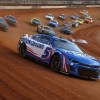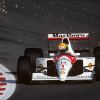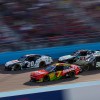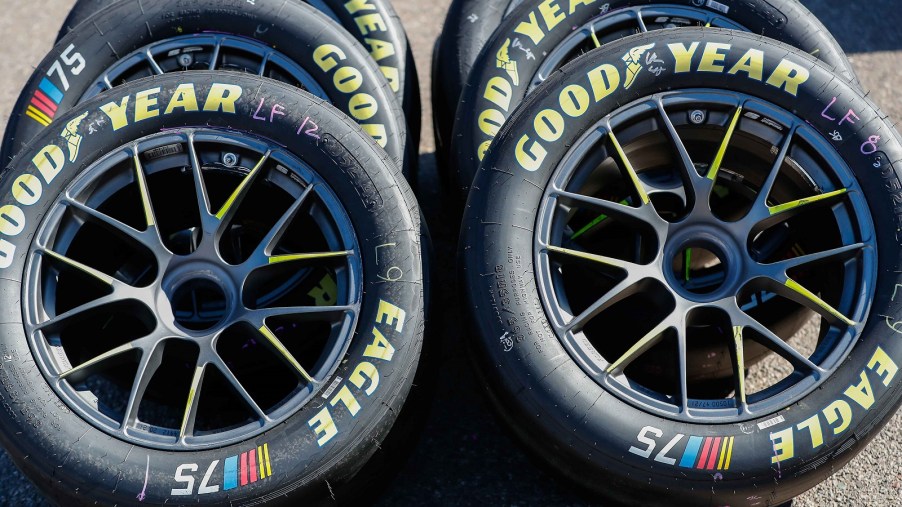
Denny Hamlin Outlines the Difference of Right vs. Left Side Tires in NASCAR
Martin Truex Jr. led the NASCAR Cup Series championship race in 2019 and was the dominant car that day. Until Truex’s pit crew inadvertently installed right side tires on the left side of his car during a pit stop. Truex was forced back down pit road, and the time lost likely lost him a viable shot at his second Cup Series championship. The incident highlights the importance and differences of right- versus left- side tires in NASCAR, and Denny Hamlin recently explained why it’s so important.
“NASCAR 101, the right side tires are bigger than the left side tires,” Hamlin said on his latest Actions Detrimental podcast. “It helps the car track around the corner. Think about this, if you had a car, you just pushed it, if the tires are bigger on the right, it’s going to make it go left. You can’t use left-side tires on the right.”
That’s vital when all of NASCAR’s ovals are run exclusively with left turns, placing more lateral force on the right tires.
There are also factors like air pressure and staggering of the tires. NBC Sports broadcaster Steve Letarte said right side tires are more durable and have more air pressure following Truex’s 2019 tire debacle.
“If you put the left front tire on the right front, it will fail,” he said during the race broadcast.
That’s why tires on pit road are laid out in a specific way, Hamlin said. Teams also write “LF” to signify “left front” or other marking on the tires to specify at which corner it must be installed.
“That’s why you see them all planned out,” Hamlin said. “It’s a tough job being a tire person, because you’ve got tons of tires any given weekend to have to deal with, you’re managing them all, you’re trying to keep the stagger of each set consistent…that’s a big part of what they’re doing.”
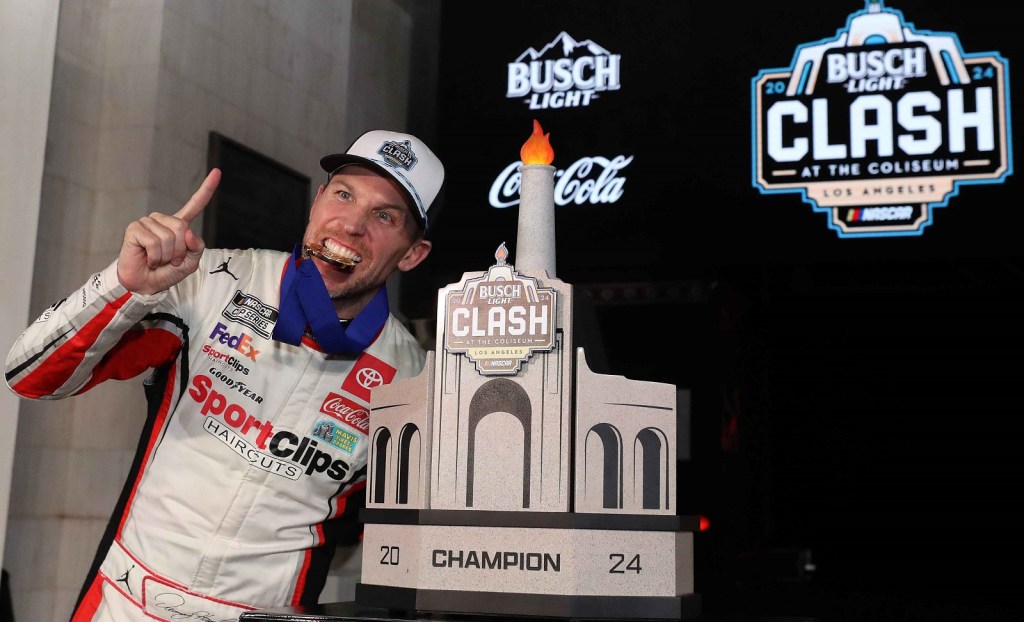
Hamlin also explained why you see crew members torching tires with a flame and scraping them on pit road. At speed, Hamlin said, NASCAR tires are continually shedding rubber. When the cars slow down under a caution, the loose rubber adheres to the hot tires. Pit crews burn off this excess rubber after the tires are taken from the car. They do so to measure how much the tire has worn using a gauge.
That loose rubber is also why cars swerve under caution.
“If we choose not to pit, you’ll see us doing some heavy swerving,” he said. “We’re trying to get that loose rubber off the tires. So that way, when we charge in the corner on a restart on older tires, we’re riding on actual tire rubber…not the loose rubber we just picked up.”
